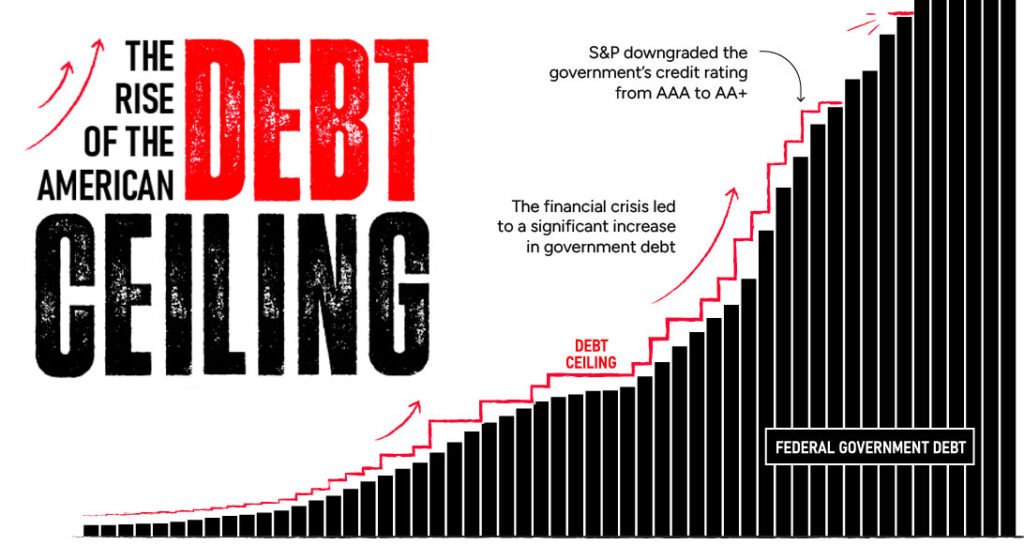
As of January 2025, the United States’ national debt stands at approximately $36.22 trillion. This staggering figure is the result of cumulative budget deficits, where government expenditures have consistently exceeded revenues over time.
Sources of U.S. Government Debt
The U.S. government finances its debt by issuing various securities, primarily through the Department of the Treasury. These securities are purchased by a diverse group of investors, both domestic and international. Broadly, the holders of U.S. debt can be categorized into two main groups:
- Debt Held by the Public: This includes all federal debt held by individuals, corporations, state or local governments, Federal Reserve Banks, foreign governments, and other entities outside the United States government. Debt held by the public accounts for a significant portion of the total national debt.
- Intragovernmental Holdings: These are Government Account Series (GAS) securities held by government trust funds, revolving funds, and special funds, and Federal Financing Bank (FFB) securities. Essentially, this represents money the government owes to itself, such as funds held in the Social Security Trust Fund.
Major Holders of U.S. Debt
A detailed breakdown of the major holders of U.S. debt is as follows:
- Foreign Investors: Foreign governments and investors hold a substantial portion of U.S. debt. The top foreign holders include Japan, China, the United Kingdom, the Cayman Islands, and Luxembourg. These figures highlight the global confidence in U.S. Treasury securities as a safe investment.
- Federal Reserve System: The Federal Reserve holds a significant amount of U.S. debt as part of its monetary policy operations to manage interest rates and ensure liquidity in the financial system.
- Domestic Investors: This group includes mutual funds, state and local governments, banks, insurance companies, and private pension funds. Collectively, they hold a considerable portion of the debt, reflecting the integration of Treasury securities into various investment and savings portfolios.
Servicing the Debt
The U.S. government is obligated to pay interest to its debt holders. The cost of servicing this debt has been rising due to both the increasing total debt and prevailing interest rates. In fiscal year 2025, interest costs are projected to total nearly $1 trillion, accounting for a significant portion of federal expenditures.
Can the Government Clear Debt by Printing More Dollars?
While, in theory, the U.S. government could print more money to pay off its debt, doing so would have severe economic consequences. Injecting a large amount of money into the economy would likely lead to hyperinflation, eroding the purchasing power of the currency and destabilizing the economy. Moreover, such actions could undermine global confidence in the U.S. dollar, which serves as the world’s primary reserve currency. Therefore, printing money is not a viable solution for managing or reducing national debt.
Detailed Breakdown of the $36 Trillion Debt
As of January 2025, the U.S. national debt is approximately $36.22 trillion. This debt is composed of various instruments and held by different entities:
- Debt Held by the Public: Approximately $27.3 trillion
- Foreign Holders: Around $7.4 trillion
- Federal Reserve: Approximately $5.24 trillion
- Domestic Investors: The remaining portion, held by mutual funds, state and local governments, banks, insurance companies, and private pension funds
- Intragovernmental Holdings: Approximately $7.0 trillion
- Social Security Trust Fund: A significant component of this category
- Other Government Funds: Including Medicare and various federal retirement funds
It’s important to note that these figures are subject to change due to ongoing government borrowing, fiscal policies, and economic conditions. The national debt is a dynamic figure, reflecting the continuous financial operations of the federal government.
In conclusion, the U.S. national debt is a complex and multifaceted issue, involving various domestic and international stakeholders. Managing this debt requires careful fiscal policy, prudent borrowing, and a commitment to sustainable economic practices to ensure long-term financial stability.